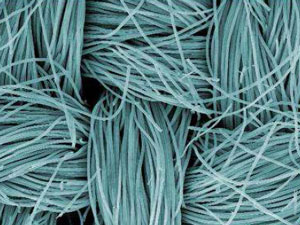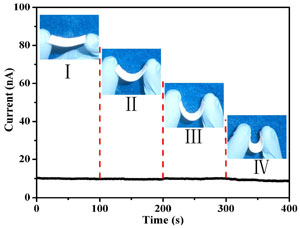Electronic fabric

Not so long ago, we entered the period of technology development, when electronic components were so miniaturized that the creation of tiny gadgets was no longer a problem for engineers. The people themselves have become a problem, because managing and simply holding the device in their hand is smaller than the average cellular phone is inconveniently purely anatomically. And yet, the vector to increase the compactness of electronic devices promises us the discovery of new horizons. And the development of nanotechnology has become, in fact, the cornerstone on which all breakthrough inventions and technologies will be based: the creation of new, “anatomical” interfaces for human interaction with electronic devices, the reduction of energy consumption and weight, the introduction of electronics into traditional “analog” spheres. For example, flexible screens and "electronic fabric". In recent years, news from various companies reporting on prototyping of flexible screens periodically appears. Apparently, we are pretty close to the appearance of the first commercial samples of truly wearable electronics. However, the principle of wearability implies the integration of digital technology directly into clothing. And the idea of creating "smart" clothes is not something that has long been in the air, and work on it is also being conducted in various countries. However, the practical implementation of this idea rests on a number of still unsolved technological problems, of which one of the most important is to ensure the compactness and high capacity of the energy source. One solution could be to create a fabric that independently generates and stores a supply of electricity.
Science successes

Recently, representatives of the Chinese Academy of Sciences (who would have thought) and the Wuhan National Laboratory of Optoelectronics (Wuhan National Laboratory for Optoelectronics) reported that they were able to grow a sample of lead dioxide nanoparticles on a carbon substrate by arranging hollow lead dioxide nanotubes into an interlaced structure . Nanotube material has the properties of a broadband semiconductor with high quantum efficiency in the ultraviolet range. This makes it a good material for electrodes in batteries, and for capturing light. A team of Chinese scientists combined ultraviolet photodetector and a lithium-ion battery “woven” from silicon dioxide in one device. Their goal was to create a flexible photodetector that does not require an external power source, which can be given any shape. The resulting device in its performance is comparable to the "traditional" and, more importantly, does not lose its effectiveness, even when rolled up.
')

According to the creators, initially it was a challenge: to make a similarly large fabric with a preserved woven structure. And now they believe that the task of creating a properly organized structure from a grown dense layer of nanotubes on a carbon substrate can be reliably solved. The researchers expressed the joy that the resulting device "is a very simple system that has the advantages of adjustable size and portability." A representative from Tongji University (Tonji University), who studies materials for the electronic and chemical industries, noted the low cost of making this prototype of a flexible electronic device that has “unique potential for creating flexible, flexible, and wearable electronic systems.” The scientist also stressed that the main problem in the development of such devices is to ensure sufficient mechanical strength and durability.
Why do you need it?
As we see, the Chinese have set themselves the task of actually turning clothes into a solar battery. And in the battery, directed at once in all directions, conditionally not having weight (we still wear clothes), much less fragile compared to traditional silicon batteries, and also accumulating electricity in itself. Without a doubt, such clothes will be useful to everyone. Integrating a mobile computer with a GSM module into a jacket made of electrogenerating fabric will, with proper lighting, completely forget about such a thing as a charger. Today's iPads and iPhones will become as ridiculous and cumbersome anachronism as the public payphone booths on the street look like today. Let's look a little further: with further miniaturization of electronics, mass commercial implantation of various devices will be possible. And then the question of power supply will arise in a different plane: not for how long, but how ? And the use of electrogenerating clothes for feeding implants at first can be the only way.

Much happier compared to civilians will be the military: today, promising complexes of individual equipment for soldiers imply carrying up to 6 kg of batteries for a wearable computer, radio station, night vision device, laser pointer and flashlight. In this case, the life of all this beauty from the battery is also very small. Imagine how much the capabilities of the military will expand, which will be able to dress each soldier in a “self-charging” uniform and equip it with a flexible, damage-resistant computer that transmits information about the whereabouts of the fighter to his immediate commander. Operators of UAVs will be able to see their location in real time, which will significantly improve their efficiency and reduce losses from friendly fire. Here it is, transferring the principle of today's strategic toys to real life, hello lovers of Starcraft and Command & Conquer .
In the more distant future, clothing made of fiber will allow the principle of optical camouflage to be realized, when a person becomes transparent. Remember how in the beautiful anime Ghost in the Shell (Ghost in the Shell) overalls of the main character seemed to become glass, making it almost invisible? Why are there anime, because everyone watched " Predator " with the unforgettable Schwarzenegger, what impression did the "transparent" alien camouflage. The most interesting thing is that research work is already underway and there are first practical results on the creation of such technologies .

Source: https://habr.com/ru/post/192392/
All Articles